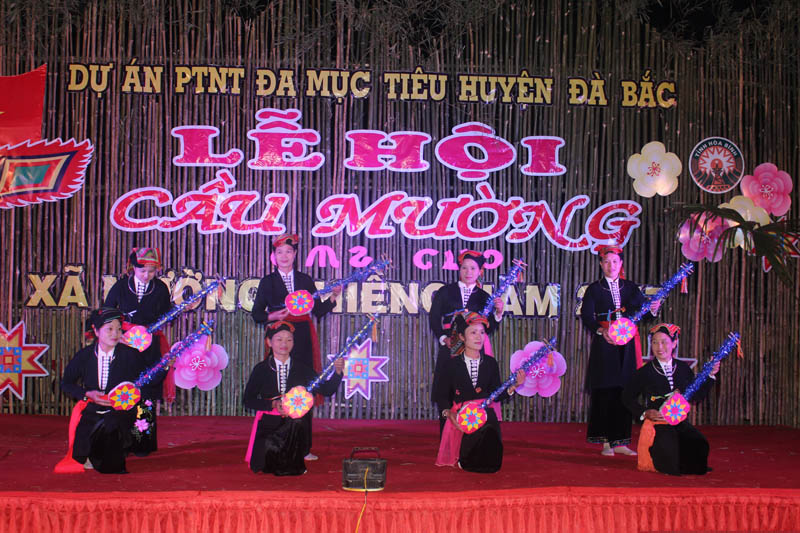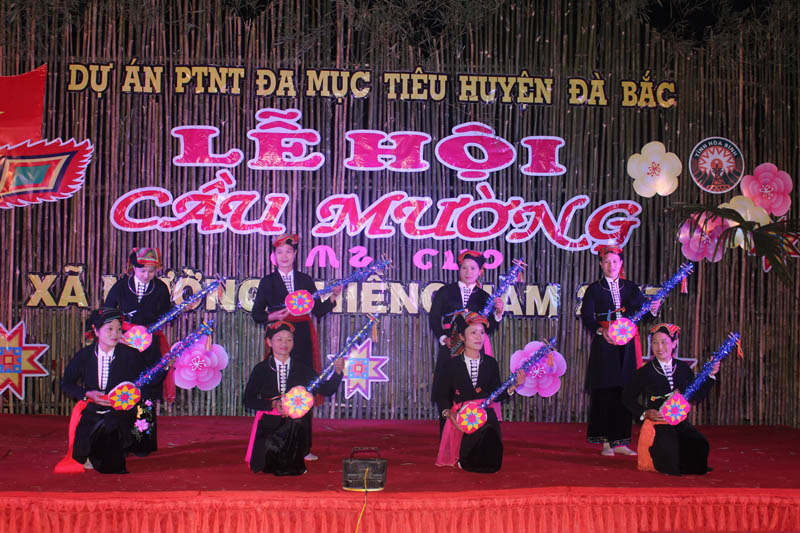
(HBO) – The mass art movement in Muong Chieng commune (Da Bac district, Hoa Binh province) has developed over the past time with the engagement of numerous people, creating an exciting atmosphere in production and improving locals’ spiritual and cultural lives. Art performances have played an important role in promoting local traditional cultural values.
Chairman of the communal People’s Committee Sa Van Hung said with over
90 percent of population being
Tay ethnic
people, the public art activities have received much attention from the local
Party committee, authorities and mass organisations. At present, in additional
to a commune’s art troupe, nine hamlets in the commune have set up art troupes.
Each has 10-15 members. Mass organisations such as youth, women and elder
people unions also established performance teams.
Art troupe
in Muong Chieng commune (Da Bac) usually perform to serve people.
To develop the public art movement, the communal
Party and People’s Committee have mobilised sources to upgrade and build
cultural houses to meet the local demand of performing arts and practicing
sports.
The commune hosts a number of exchanges,
competitions and festivals during special occasions such as Tet holiday,
attracting crowds of people. The quality of art programmes has been improved,
creating a cheerful atmosphere for local residents. The locals are encouraged
to join these activities to enrich their cultural and spiritual lives as well
as contribute to preserving cultural identities. Most of art troupes perform
voluntarily while actively involving in the dissemination of the Party’s
guidelines and the State’s policies and law.
Present at an art exchange night in Muong Chieng
commune, we felt the strong development of the public art movement here. The
event became a festival of local people with nearly 20 music, dance and
instrument performances, including folk songs and ethnic dances praising the
Party, late President Ho Chi Minh, and the nation’s heroic struggle.
At the end of the event, people held each
other’s hands to a dance to affirm their solidarity.
Sa Thi Thuong from class 11A4, Muong Chieng high
school boarding school said she felt very happy to practise songs and dances as
well as exchange with many people to preserve and develop local culture./.
The People’s Committee of Lac Son district held a ceremony on April 28 to receive the provincial relic certificate for the ancient rock carving site at Suoi Co stream, located in My Thanh commune.
A special music show titled "The country is in the fullness of joy” has been held at Hoa Binh Square in Hoa Binh city in celebration of the 50th anniversary of the liberation of the South and national reunification (April 30, 1975–2025).
The People's Committee of Lo Son commune, Tan Lac district, has organised the local annual traditional stream fishing festival on April 19 - 20.
As a land deeply intertwined with human history and Vietnam’s millennia-long journey of nation-building and defence, Hoa Binh is often revered for its epic tales and legends.
Residents of Hoa Binh boast a rich cultural identity, reflected in their unique language, traditional attire, customs, and folk melodies – described as "sweet as honey, clear as a mountain stream.”
Lac Son district’s Vu ban town held the 2025 Truong Kha temple festival on April 12–13 (the 15th–16th days of the third lunar month). Since its revival in 2019, the festival has been organised every three years, preserving valuable intangible heritage while meeting the community’s cultural and spiritual needs.



